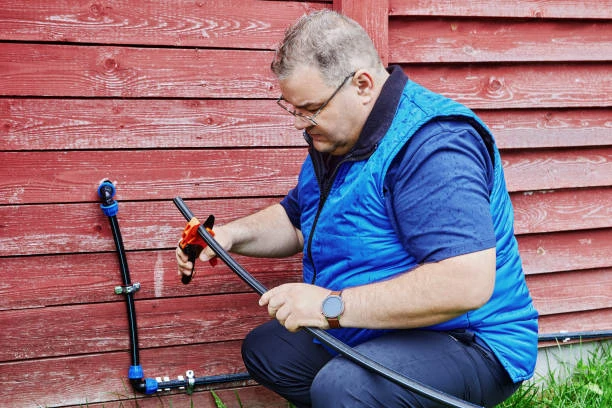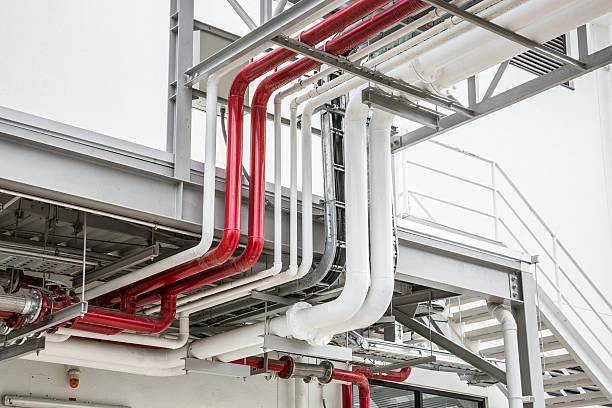1. Overview of HDPE Pipe Fittings
HDPE pipe fittings are used in a range of industries due to their durability, flexibility, and ability to resist extreme temperatures and chemicals. These fittings include couplings, elbows, tees, and valves, which ensure secure and efficient pipe connections for diverse applications.
2. Why HDPE is a Preferred Material
HDPE stands out for its strength and flexibility, making it ideal for piping systems that endure high pressures. Its chemical resistance enables use in environments exposed to various substances, including chemicals and gases. Moreover, HDPE has a long service life, with minimal maintenance required.
3. Applications of HDPE Pipe Fittings
HDPE pipe fittings are utilized in:
- Water distribution: They provide leak-proof solutions for transporting potable water.
- Gas distribution: Their high resistance to chemicals makes them ideal for safely distributing gases.
- Sewage systems: HDPE is often used in drainage and sewage systems due to its resistance to corrosion.
- Industrial applications: These fittings are widely used in chemical and processing industries.
4. Current Market Size and Growth Rate
The HDPE pipe fitting market is growing at a steady pace, driven by the need for advanced infrastructure development. As of 2023, the global HDPE pipe fitting market values several billion dollars. Analysts project growth at a CAGR of over 5% until 2032.
5. Key Players in the HDPE Pipe Fitting Market
Leading companies in the market include:
- JM Eagle
- Aliaxis Group
- Chevron Phillips Chemical
- Wavin Group
- Pipelife International
These companies are driving the market with continuous innovations and strategic expansions.
6. Technological Innovations in HDPE Pipe Fittings
Recent technological advancements in HDPE pipe fittings focus on improving efficiency and environmental sustainability. Smart piping systems with sensors monitor leakage, pressure, and temperature. These systems are expected to gain popularity in the coming years.
7. Regional Analysis: Market Demand by Region
North America
In North America, the growing need for water and gas distribution networks is pushing demand for HDPE pipe fittings. Governments are investing in replacing aging infrastructure with modern, durable solutions like HDPE.
Europe
Europe is focused on sustainability, with HDPE pipe fittings being embraced for eco-friendly water management systems. Additionally, the region is investing in modern infrastructure projects that boost demand for advanced piping materials.
Asia-Pacific
The Asia-Pacific region, led by China and India, is expected to experience the fastest growth in the HDPE pipe fitting market. Rapid urbanization, industrial growth, and infrastructure expansion are key drivers in this region.
Middle East & Africa
With expanding oil and gas operations in the Middle East, HDPE fittings are becoming increasingly popular in these sectors. Additionally, growing urban development projects across Africa are creating demand for cost-effective piping solutions.
8. Environmental Benefits of HDPE Pipe Fittings
HDPE is a recyclable material, which makes it an environmentally friendly option. Its long life cycle reduces the need for frequent replacements, lowering the environmental impact associated with manufacturing and disposal.
9. Challenges Facing the HDPE Market
Some challenges that the HDPE pipe fitting market faces include:
- Price volatility: Fluctuations in raw material prices can affect overall costs.
- Competition from alternatives: Materials like PVC and metal pipes present strong competition in certain applications.
- Lack of skilled labor: In some regions, a shortage of experienced installers and maintenance professionals hinders market growth.
10. Future Trends: HDPE Pipe Fitting Market to 2032
The HDPE pipe fitting market is expected to see numerous advancements over the next decade. Some notable trends include:
- Smart Technology Integration: Sensors embedded in HDPE systems will enhance monitoring and performance.
- Rising Investments in Infrastructure: Both developed and developing nations are prioritizing infrastructure, boosting the demand for HDPE pipe fittings.
- Expanding Use in Emerging Economies: As economies in regions like Africa and Southeast Asia grow, they will use HDPE as a staple in industrial and municipal projects.
11. Government Initiatives Boosting Demand
Governments worldwide are increasingly investing in sustainable water management systems and robust gas distribution networks. Such initiatives will drive demand for HDPE pipe fittings in the coming years.

12. Impact of COVID-19 on the Market
The pandemic initially slowed down construction and industrial activities, but the market rebounded quickly as governments rolled out stimulus packages that prioritized infrastructure development.
13. Growth Opportunities in the Industrial Sector
The industrial sector, particularly in chemicals and oil & gas, represents a major opportunity for the HDPE pipe fitting market. These industries require durable, corrosion-resistant piping systems, and HDPE fits the bill perfectly.
14. Competition with Other Pipe Materials
While HDPE pipe fittings have distinct advantages, materials like PVC and metal still offer competition. Each material has its own strengths, and market trends suggest that innovation in HDPE technology will continue to drive its adoption.
15. Conclusion and Market Outlook
The HDPE pipe fitting market will see steady growth through 2032. Innovations in smart technology and government investment in infrastructure drive this demand. Additionally, the expanding use of HDPE in emerging economies contributes to growth. As environmental consciousness grows, HDPE’s recyclable nature further cements its position as a leading choice for modern piping systems.
FAQs
- What are HDPE pipe fittings?
HDPE pipe fittings connect HDPE pipes in various systems, including water distribution, sewage, and gas networks. - Why is HDPE preferred for piping systems?
HDPE is highly durable, flexible, resistant to chemicals, and has a long service life, making it an ideal material for modern piping systems. - What industries use HDPE pipe fittings?
People commonly use HDPE pipe fittings in water distribution and gas distribution. They also serve in sewage systems and industrial applications like chemical processing. - How is the HDPE market expected to grow by 2032?
The HDPE pipe fitting market will grow at a CAGR of over 5%. Infrastructure development, technological innovations, and increasing demand in emerging economies drive this growth. - What are the environmental benefits of HDPE?
HDPE is recyclable, and its long lifespan reduces the need for frequent replacements, making it a sustainable choice for piping systems.

















